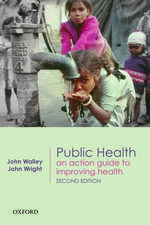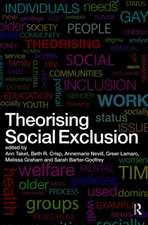Changing Landscape of Academic Women's Health Care in the United States: International Library of Ethics, Law, and the New Medicine, cartea 48
Editat de William F. Rayburn, Jay Schulkinen Limba Engleză Paperback – 29 mai 2013
Women’s healthcare is particularly vulnerable, because the obstetrician-gynecologist workforce is aging and is among the least satisfied medical specialists. Furthermore, fellowship training in women’s healthcare in internal medicine and in maternal child health in family and community medicine involves only a small portion of general internists and family physicians.
In response to this challenge, the Association of American Medical Colleges called for an expansion of medical schools and graduate medical education enrollments. As we cope with significant and rapid changes in organizations and reimbursement, academic departments of obstetrics and gynecology, family and community medicine, and internal medicine have opportunities to create a unified women’s health curriculum for undergraduate students, share preventive health and well-woman expertise in training programs, provide improved continuity of care, instill concepts of lifelong learning to our graduates, and better develop our research programs.
This volume’s chapters focus on strategic planning on behalf of academic faculty who will train the anticipated additional load of students, residents, and fellows in women’s healthcare.
-changing demographics of faculty
-expanding roles of clinician educators
-physician investigators and their future
-the hidden value of part-time faculty
-faculty salaries
-required skillsets of academic leaders
-the meaning of tenure and faculty satisfaction and retention.
Recommendations presented here from authors with distinguished leadership skills indicate a consensus, but not unanimity. Infurthering these goals, we summarize in the final chapter our collective expertise and offer ways to implement recommendations to better prepare for tomorrow’s needs in academic women’s healthcare.
| Toate formatele și edițiile | Preț | Express |
|---|---|---|
| Paperback (1) | 1088.39 lei 6-8 săpt. | |
| SPRINGER NETHERLANDS – 29 mai 2013 | 1088.39 lei 6-8 săpt. | |
| Hardback (1) | 1094.80 lei 6-8 săpt. | |
| SPRINGER NETHERLANDS – apr 2011 | 1094.80 lei 6-8 săpt. |
Din seria International Library of Ethics, Law, and the New Medicine
- 5%
 Preț: 347.30 lei
Preț: 347.30 lei -
 Preț: 397.26 lei
Preț: 397.26 lei - 15%
 Preț: 635.31 lei
Preț: 635.31 lei - 18%
 Preț: 942.76 lei
Preț: 942.76 lei - 5%
 Preț: 718.65 lei
Preț: 718.65 lei - 15%
 Preț: 634.68 lei
Preț: 634.68 lei - 15%
 Preț: 637.78 lei
Preț: 637.78 lei -
 Preț: 380.07 lei
Preț: 380.07 lei - 18%
 Preț: 959.98 lei
Preț: 959.98 lei - 15%
 Preț: 641.20 lei
Preț: 641.20 lei - 18%
 Preț: 944.19 lei
Preț: 944.19 lei - 15%
 Preț: 636.80 lei
Preț: 636.80 lei - 15%
 Preț: 643.00 lei
Preț: 643.00 lei - 18%
 Preț: 952.89 lei
Preț: 952.89 lei - 15%
 Preț: 643.48 lei
Preț: 643.48 lei - 18%
 Preț: 954.45 lei
Preț: 954.45 lei - 5%
 Preț: 1095.73 lei
Preț: 1095.73 lei - 15%
 Preț: 645.79 lei
Preț: 645.79 lei - 18%
 Preț: 1111.22 lei
Preț: 1111.22 lei - 15%
 Preț: 643.84 lei
Preț: 643.84 lei - 18%
 Preț: 1227.67 lei
Preț: 1227.67 lei - 18%
 Preț: 953.65 lei
Preț: 953.65 lei - 15%
 Preț: 638.57 lei
Preț: 638.57 lei - 5%
 Preț: 1101.21 lei
Preț: 1101.21 lei
Preț: 1088.39 lei
Preț vechi: 1145.68 lei
-5% Nou
Puncte Express: 1633
Preț estimativ în valută:
208.27€ • 219.00$ • 172.09£
208.27€ • 219.00$ • 172.09£
Carte tipărită la comandă
Livrare economică 17 aprilie-01 mai
Preluare comenzi: 021 569.72.76
Specificații
ISBN-13: 9789400735781
ISBN-10: 9400735782
Pagini: 188
Ilustrații: XII, 176 p.
Dimensiuni: 155 x 235 x 10 mm
Greutate: 0.27 kg
Ediția:2011
Editura: SPRINGER NETHERLANDS
Colecția Springer
Seria International Library of Ethics, Law, and the New Medicine
Locul publicării:Dordrecht, Netherlands
ISBN-10: 9400735782
Pagini: 188
Ilustrații: XII, 176 p.
Dimensiuni: 155 x 235 x 10 mm
Greutate: 0.27 kg
Ediția:2011
Editura: SPRINGER NETHERLANDS
Colecția Springer
Seria International Library of Ethics, Law, and the New Medicine
Locul publicării:Dordrecht, Netherlands
Public țintă
Professional/practitionerCuprins
Foreword.- Preface.- Chapter 1: Medical Education 100 years after the Flexner Report.- Chapter 2: Preparing for Medical School and Residency Training Expansion.- Chapter 3: Changing Demographics of Women's Healthcare Faculty.- Chapter 4: Clinician Educators and Their Expanding Roles.- Chapter 5: Physician Investigators and Their Future.- Chapter 6: Part-time Faculty and Their Hidden Value.- Chapter 7: Trends in Faculty Salaries.- Chapter 8: Tenure and Its Many Meanings.- Chapter 9: Faculty Satisfaction and Retention.-Chapter 10: Developing Academic Leaders.
Textul de pe ultima copertă
Since 2005 a dozen states and more than 15 specialties have reported a physician shortage or anticipate one in the next few years. This anticipated shortage and a worsening of physician distribution are compounded by a projected increased demand for women’s healthcare services.
Women’s healthcare is particularly vulnerable, because the obstetrician-gynecologist workforce is aging and is among the least satisfied medical specialists. Furthermore, fellowship training in women’s healthcare in internal medicine and in maternal child health in family and community medicine involves only a small portion of general internists and family physicians.
In response to this challenge, the Association of American Medical Colleges called for an expansion of medical schools and graduate medical education enrollments. As we cope with significant and rapid changes in organizations and reimbursement, academic departments of obstetrics and gynecology, family and community medicine, and internal medicine have opportunities to create a unified women’s health curriculum for undergraduate students, share preventive health and well-woman expertise in training programs, provide improved continuity of care, instill concepts of lifelong learning to our graduates, and better develop our research programs.
This volume’s chapters focus on strategic planning on behalf of academic faculty who will train the anticipated additional load of students, residents, and fellows in women’s healthcare.
-changing demographics of faculty
-expanding roles of clinician educators
-physician investigators and their future
-the hidden value of part-time faculty
-faculty salaries
-required skillsets of academic leaders
-the meaning of tenure and faculty satisfaction and retention.
Recommendations presented here from authors with distinguished leadership skills indicate a consensus, but not unanimity. Infurthering these goals, we summarize in the final chapter our collective expertise and offer ways to implement recommendations to better prepare for tomorrow’s needs in academic women’s healthcare.
Women’s healthcare is particularly vulnerable, because the obstetrician-gynecologist workforce is aging and is among the least satisfied medical specialists. Furthermore, fellowship training in women’s healthcare in internal medicine and in maternal child health in family and community medicine involves only a small portion of general internists and family physicians.
In response to this challenge, the Association of American Medical Colleges called for an expansion of medical schools and graduate medical education enrollments. As we cope with significant and rapid changes in organizations and reimbursement, academic departments of obstetrics and gynecology, family and community medicine, and internal medicine have opportunities to create a unified women’s health curriculum for undergraduate students, share preventive health and well-woman expertise in training programs, provide improved continuity of care, instill concepts of lifelong learning to our graduates, and better develop our research programs.
This volume’s chapters focus on strategic planning on behalf of academic faculty who will train the anticipated additional load of students, residents, and fellows in women’s healthcare.
-changing demographics of faculty
-expanding roles of clinician educators
-physician investigators and their future
-the hidden value of part-time faculty
-faculty salaries
-required skillsets of academic leaders
-the meaning of tenure and faculty satisfaction and retention.
Recommendations presented here from authors with distinguished leadership skills indicate a consensus, but not unanimity. Infurthering these goals, we summarize in the final chapter our collective expertise and offer ways to implement recommendations to better prepare for tomorrow’s needs in academic women’s healthcare.
Caracteristici
This volume is an important addition to the literature, because: women's health is a major academic healthcare issue; it focuses on strategic planning on behalf of academic faculty; it is written by authors with distinguished leadership skills; uses of national normative databases and links to the Flexner Report; contains recommendations for implementation; lays a foundation for broader investigation and offers a template for studying other healthcare disciplines.











